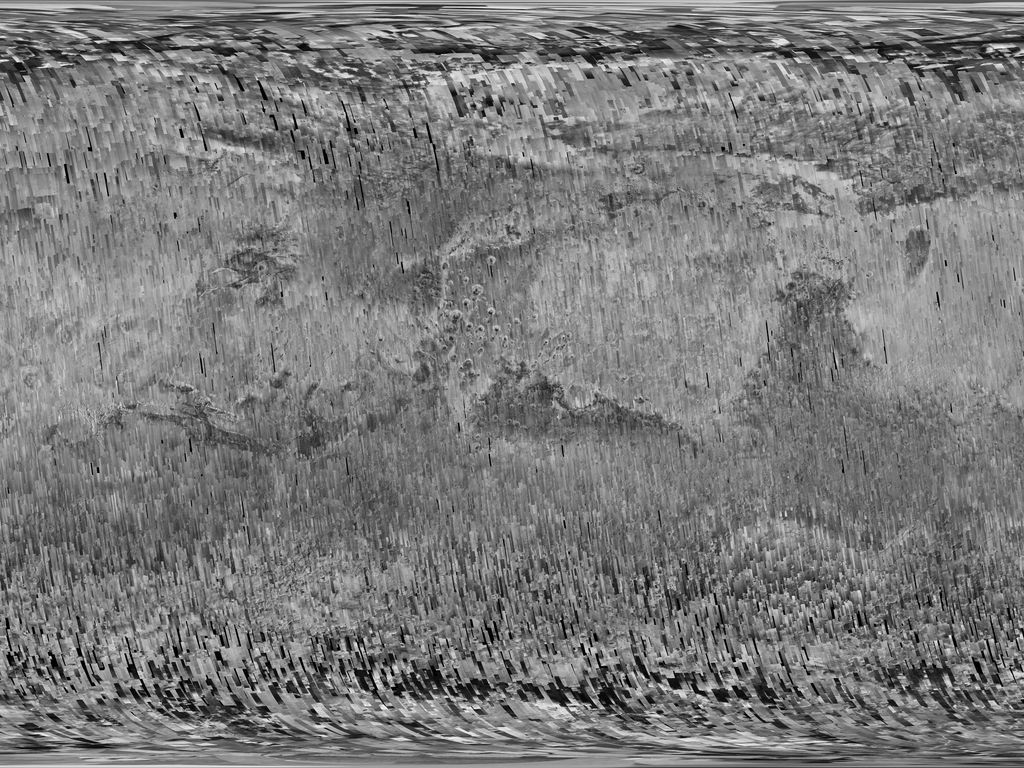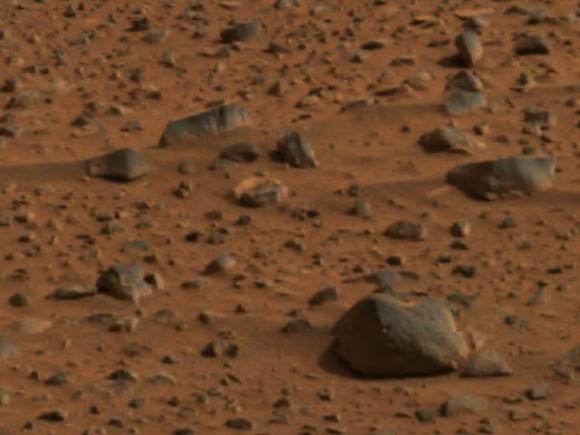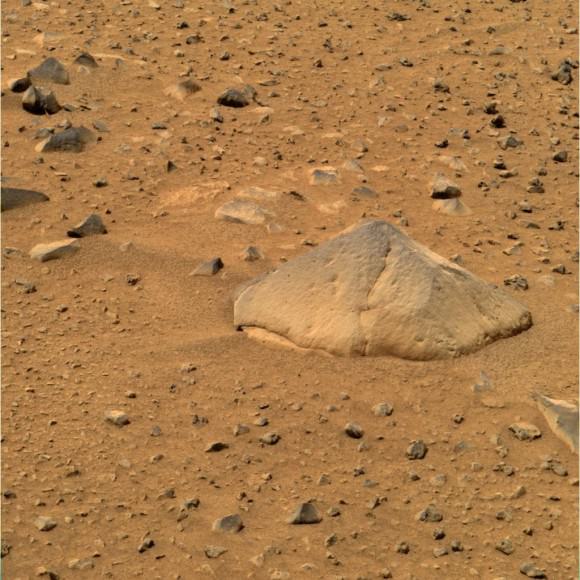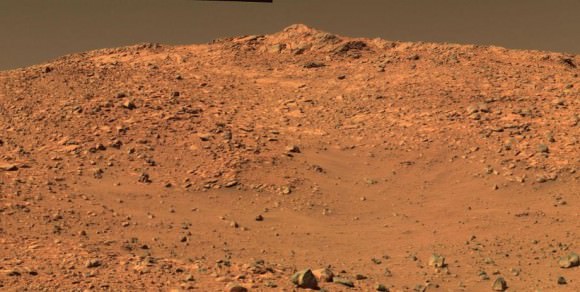Most of us never do one thing 50,000 times in our life. So for NASA’s Mars Reconnaissance Orbiter (MRO), completing 50,000 orbits around the red planet is a big deal. And, it only took 10 years to do so.
The MRO could be called one of NASA’s flagship missions. It’s presence in orbit around Mars has helped open up our understanding of that planet immensely. And it’s done so while providing us a steady stream of eye candy.
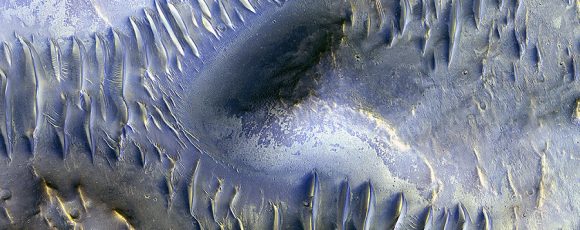
MRO was launched in 2005 and reached Mars orbit in March, 2006. After 10 years at work, it has accomplished a lot. In a recent press release, NASA calls the MRO “the most data-productive spacecraft yet.” Though most of us might know the orbiter because of it’s camera, the High-Resolution Imaging Science Experiment (HiRise), the MRO actually has a handful of other instruments that help the orbiter achieve its objectives. In broad terms, those objectives are:
- to study the history of water on Mars
- to look at small scale features on the surface, and identify landing sites for future Mars missions
- to act as a communications relay between Mars and Earth
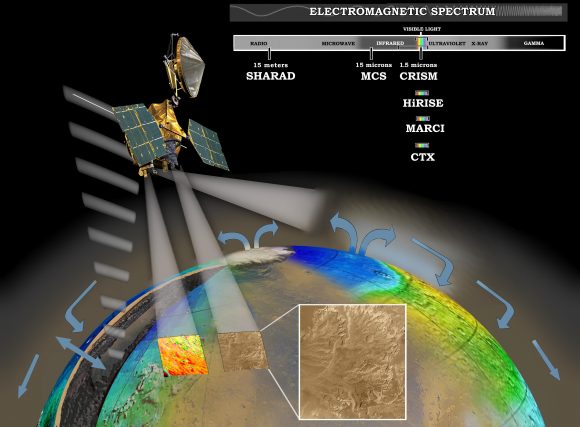
MRO’s HiRise camera gets all the glory, but it’s another onboard camera, the Context Camera (CTX), that is the real workhorse. The CTX is a much lower resolution than the HiRise, but its file sizes are much more manageable, an important consideration when every file has to travel from Mars to Earth—an average distance of about 225 million km.
CTX has captured 90,000 images so far in MRO’s mission, and each one captures details smaller than a tennis court. In the course of the mission so far, CTX has images that cover 99.1% of the Martian surface. Over 60% of the planet has been covered twice.
“Reaching 99.1-percent coverage has been tricky…” – Context Camera Team Leader Michael Malin
“Reaching 99.1-percent coverage has been tricky because a number of factors, including weather conditions, coordination with other instruments, downlink limitations, and orbital constraints, tend to limit where we can image and when,” said Context Camera Team Leader Michael Malin of Malin Space Science Systems, San Diego.
Malin said, “Single coverage provides a baseline we can use for comparison with future observations, as we look for changes. Re-imaging areas serves two functions: looking for changes and acquiring stereoscopic views from which we can make topographic maps.”
Because the CTX captures image of the same surface areas twice, it documents changes on the surface. There have been over 200 instances of impact craters appearing in a second image of the same area. Scientists have used this to calculate the rate that meteorites impact Mars.
The instruments on board the MRO work as a team. The CTX can capture images of areas of interest, and the HiRise can be used for higher-resolution images of the same area. By locating fresh impact craters, then studying them more closely, the MRO has helped discover the presence of what looked like sub-surface ice on Mars. A third instrument, the Compact Reconnaissance Imaging Spectrometer for Mars (CRISM), confirmed the presence of ice.
The CTX is the workhorse camera, and the HiRise is the diva, but MRO actually has a third camera: the Mars Color Imager (MARCI). MARCI is a very low resolution camera compared to the others. It’s also a wide-angle camera with really only one purpose: characterizing Martian weather. Every day, MARCI takes about 84 images which together create a daily global map of Mars. You can see a weekly Martian weather report from MARCI here.
The MRO recently manoeuvered itself into position for its next task—helping the InSight Lander. The MRO must receive critical radio transmissions from NASA’s InSight Lander as it descends to Mars. Insight will use its instruments to examine the interior of Mars for clues to how rocky planets form. Not only did MRO help find a landing spot for Insight, but it will hold the lander’s hand as it descends, and it will act as a data relay.
“After 11 and a half years in flight, the spacecraft is healthy and remains fully functional.” – MRO Project Manager Dan Johnston.
There’s no end in sight for the MRO. It just keeps going and going, and fulfilling its mission objectives on a continuing basis. “After 11 and a half years in flight, the spacecraft is healthy and remains fully functional,” said MRO Project Manager Dan Johnston at NASA’s Jet Propulsion Laboratory, Pasadena, California. “It’s a marvelous vehicle that we expect will serve the Mars Exploration Program and Mars science for many more years to come.”

